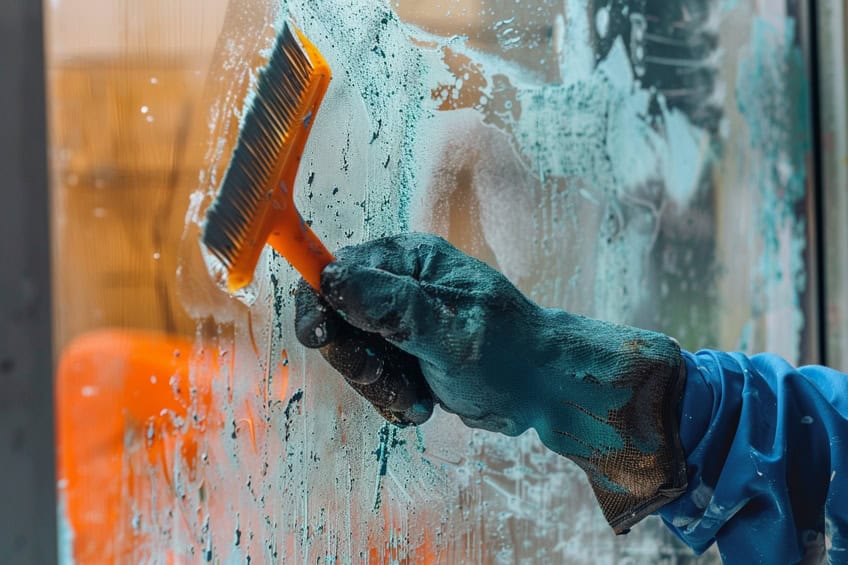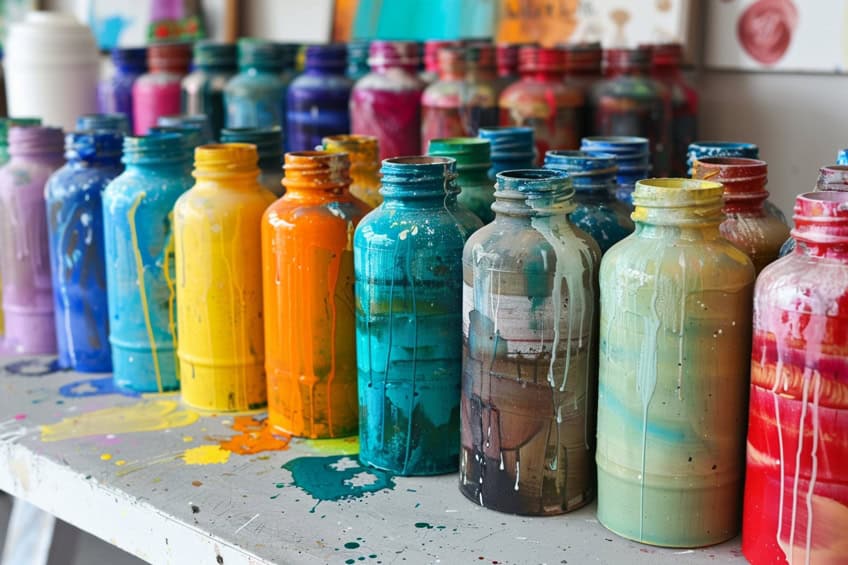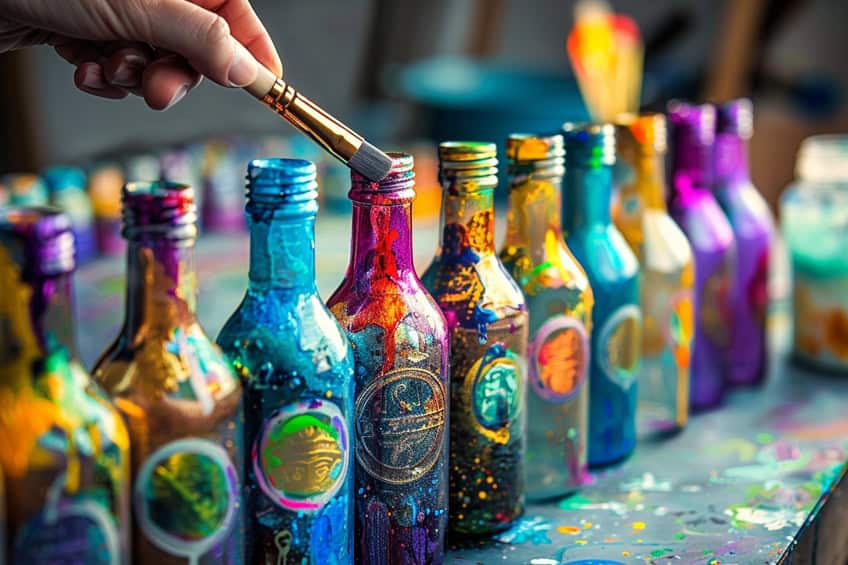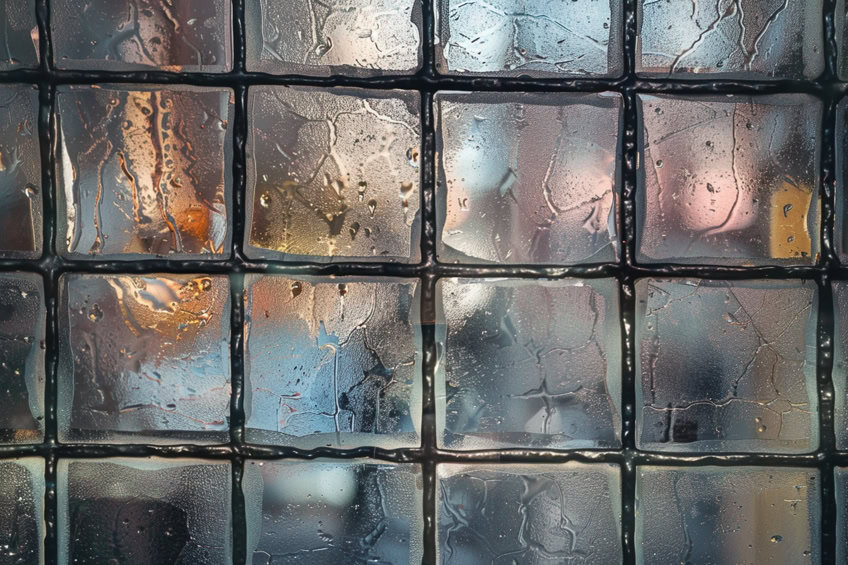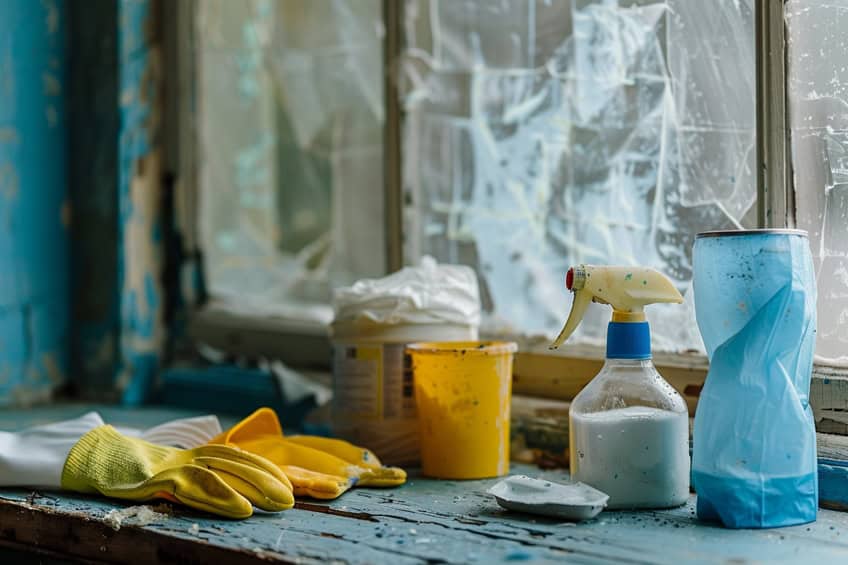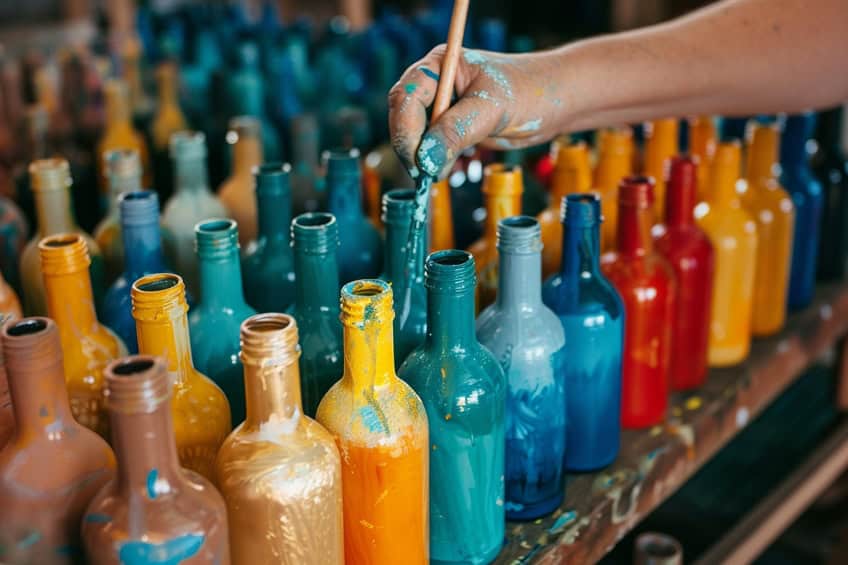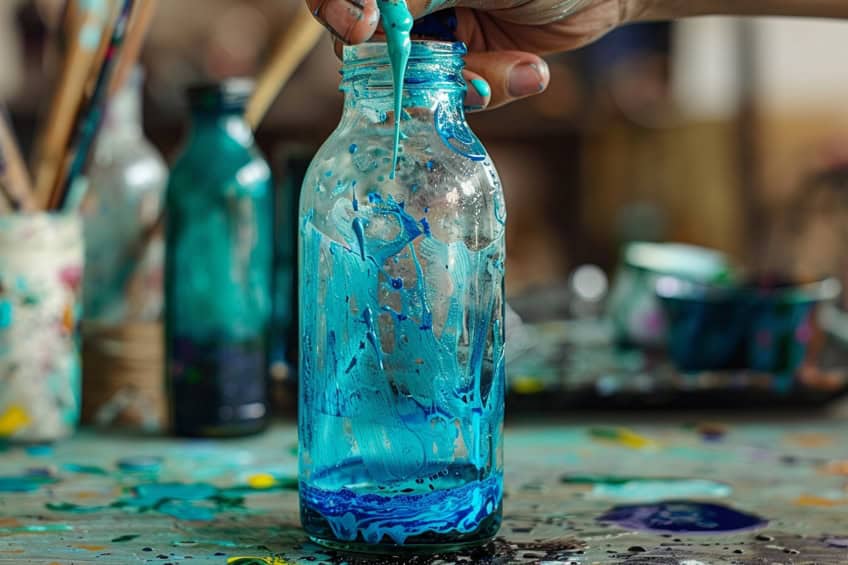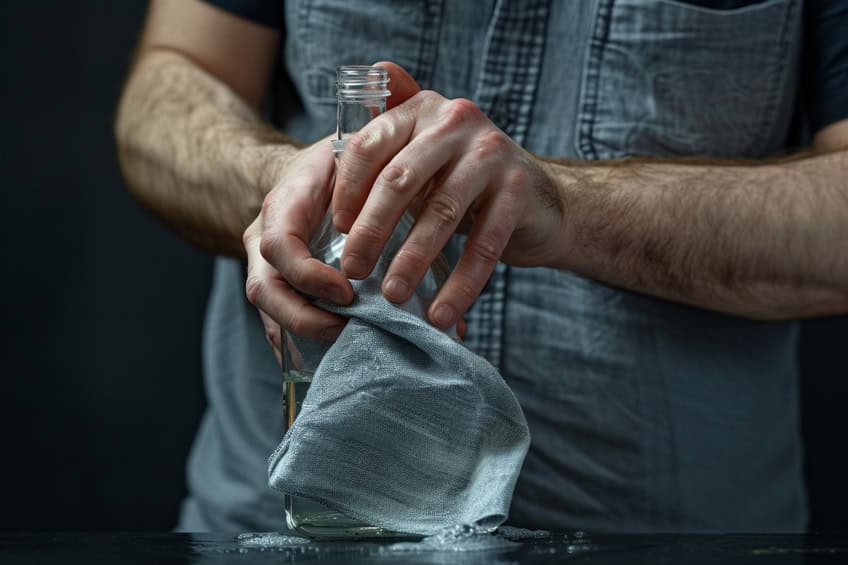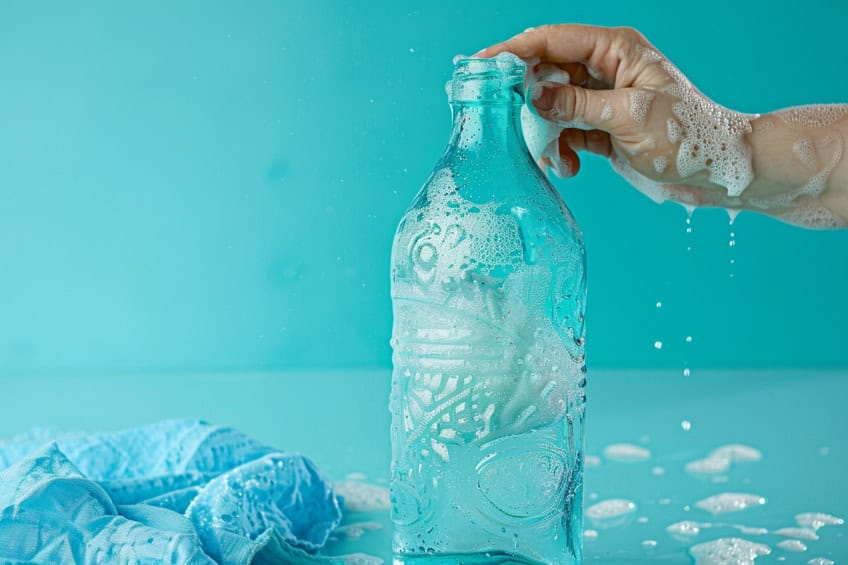How to Remove Chalk Paint from Glass – A Step-by-Step Guide
This post may contain affiliate links. We may earn a small commission from purchases made through them, at no additional cost to you. You help to support resin-expert.com
Welcome to the colorful world of chalk paint transformations! Whether you’ve accidentally splashed some vibrant hues onto your glass surfaces or you’re just ready for a fresh canvas, learning how to remove chalk paint from glass can be both a creative adventure and a practical skill. In this guide, we’ll dive into effective techniques and handy tips to help you restore your glass to its original clarity or create a whole new masterpiece. Say goodbye to chalky mishaps and hello to a glass canvas ready for your next artistic endeavor!
Table of Contents
Key Takeaways
- Chalk paint can be removed from glass with careful methods to avoid surface damage.
- An understanding of how chalk paint adheres to glass informs the best removal practices.
- Post-removal, the glass should be cleaned for any remaining residue and to restore its clarity.
What Is Chalk Paint?
Chalk paint is a decorative paint known for its matte finish and easy application process. It is widely appreciated for its versatility and the fact that it requires minimal surface preparation, making it a favorite among DIY enthusiasts and professional painters alike.
The paint’s unique properties are owed to its composition, which typically includes calcium carbonate (giving it the distinctive chalky texture), talc, and water-based pigments. Due to the nature of these ingredients, chalk paint adheres to a variety of surfaces including wood, metal, and glass without the need for primer or sanding. One of the defining features of chalk paint is its:
- Opaque coverage
- Ability to create distressed and antique looks
- Quick-drying qualities
Lastly, chalk paint is often sealed with a wax or lacquer to enhance its durability and give it a slight sheen, though it retains a largely matte appearance. This sealant also makes the paint more resistant to wear and allows for easier cleaning and maintenance.
Understanding Chalk Paint and Glass Surfaces
Chalk paint is often celebrated for its versatility and the unique matte finish it gives to a variety of surfaces. However, when chalk paint ends up on unintended surfaces like glass, it may not be seen in such a favorable light. Removing this type of paint from glass requires a delicate balance of thoroughness and care to prevent scratching or damaging the surface. Understanding the relationship between chalk paint and glass is crucial in devising an effective removal strategy.
While glass is non-porous and slick, making it less receptive to paint, the ingredients in chalk paint allow it to adhere stubbornly. Thus, removing chalk paint from glass isn’t as simple as wiping it away but neither does it have to be a source of major concern. Professional techniques focus on weakening the bond between the paint and glass before gently scraping away the residue. In removing chalk paint from glass, it’s crucial to understand the unique nature of chalk paint and the properties of glass surfaces to ensure effective and safe removal.
Characteristics of Chalk Paint
Chalk paint is known for its matte finish and versatility, as it adheres well to various surfaces without the need for priming or sanding. Typically non-toxic, chalk paint is easy to use on furniture, wood, metal, plastic, fabric, and even glass.
Despite its convenience for decorative purposes, when it comes to removal, particularly from non-porous surfaces like glass, its adhesion can pose a challenge.
- Finish: Matte
- Adhesion: High (no priming needed)
- Toxicity: Generally non-toxic
- Usability: Furniture, wood, metal, plastic, fabric, glass
Properties of Glass as a Non-Porous Surface
Glass surfaces stand out because of their non-porous nature, meaning they do not absorb liquids or paint, which can make the removal process less arduous. Being a smooth and non-porous surface, glass does not permit chalk paint to penetrate, allowing for methods that involve scraping or wiping with a suitable solvent like rubbing alcohol to be effective.
- Nature: Smooth, non-porous
- Absorption: Minimal
- Cleaning method: Scraping, solvent-based (e.g., rubbing alcohol)
Preparation for Chalk Paint Removal
Before one starts the removal process of chalk paint from glass, it is crucial to gather the necessary materials and adhere to safety measures. This ensures a smooth and hazard-free work experience.
Gathering Necessary Materials
For effective removal of chalk paint, one will require the following items:
- Water: Essential for cleaning and rinsing.
- Mild soap or dish soap: A gentle cleanser to aid in softening the paint.
- Sandpaper: Fine-grit sandpaper may be needed if mechanical removal is necessary.
- Soft cloth: Useful for applying soap and water as well as for gentle scrubbing.
- Razor blade or putty knife: To carefully scrape paint without scratching the glass.
- Plastic sheeting: Protects surrounding areas from spills or drips.
- Paper towels: Helpful for blotting and absorbing excess liquid.
- Rubber gloves: To protect hands from chemicals or rough materials.
- Safety glasses: Eye protection is crucial when dealing with potential splashes or flying debris.
- Face mask: Especially if using solvents, to avoid inhaling fumes.
- Commercial solvent (optional): Such as mineral spirits, vinegar solution, acetone, or denatured alcohol, depending on the type of chalk paint used.
Safety Measures Before Starting
Prior to the commencement of paint removal, one should enforce the following safety precautions:
- Ensure the work area is well-ventilated to dissipate fumes from solvents or cleaners.
- Wear appropriate personal protective equipment (PPE), such as gloves, safety glasses, and face mask, to minimize risk of injury or exposure to chemicals.
- Read and follow the manufacturer’s instructions for any chemical cleaners or solvents used.
- Prepare the cleaning area with plastic sheeting to avoid damage to surfaces from possible spills.
- Handle tools like razor blades and putty knives with care to prevent scratching the glass or personal injury.
Chalk Paint Removal Techniques
When attempting to remove chalk paint from glass, it is pivotal to choose a method that preserves the integrity of the glass while effectively detaching the paint. Techniques can be broadly categorized into mechanical means, chemical agents, or a more environmentally conscious DIY route.
Mechanical Methods
Mechanical methods refer to the physical removal of chalk paint using tools or abrasive materials. The initial step often involves a paint scraper or a razor blade scraper to gently lift and peel away the paint from the surface. The scraper should be used at a flat angle to minimize scratching. If more abrasive action is needed, fine-grit sandpaper or a steel wool pad may be employed to scrub away residual paint.
For large areas, a power sander can expedite the process, though with great care to not damage the glass.
Tools and materials to use include:
- Paint scraper
- Razor blade scraper
- Fine-grit sandpaper/steel wool pad
- Power sander (cautious use)
Chemical Methods
A chemical approach involves using a solvent or paint stripper to break down the chalk paint. Paint thinners like turpentine or chemical paint strippers specifically designed for the type of paint in question can be applied using a sponge or brush. After application, the chemical should be allowed to sit and penetrate the paint before removal. It’s important to note that adequate ventilation is crucial when using these substances. Additionally, paint remover can be used in a similar fashion, ensuring that manufacturer’s instructions are followed closely to prevent damage to the glass. Key substances include:
- Paint thinners (e.g., turpentine)
- Chemical paint strippers
- Paint remover
DIY and Natural Solutions
For an eco-friendly approach, one might consider DIY and natural solutions such as a soap mixture or white vinegar. Applying a solution of warm soap and water with a scrubbing sponge can sometimes loosen and lift the paint, making it easier to remove. White vinegar, warmed, can be applied generously with a sponge or cloth and left to sit before scraping the paint away with a bladed tool. These methods are ideal for those seeking a non-toxic alternative and for paint that is water-soluble or not heavily applied. Natural remedies include:
- Warm soap and water
- White vinegar
- Heat (via a heat gun, carefully applied)
By considering the specific circumstances of the paint application and the glass involved, one can select the most appropriate technique to efficiently and safely remove chalk paint.
Finishing and Cleanup After Removal
Once the bulk of the chalk paint has been removed from the glass surface, the focus shifts to ensuring that the surface is thoroughly clean and cared for. This involves neutralizing any cleaning agents used and providing the glass with appropriate post-removal maintenance.
Neutralizing and Cleaning the Glass Surface
After successfully scraping off the chalk paint, residual paint may still remain. At this stage, neutralizing any persistent spots is crucial. A mixture of warm water and a mild soap should be used to create a gentle cleaning solution. To apply:
- Dampen a sponge with the soapy water.
- Gently wash the glass surface in a circular motion to remove any remaining paint particles.
- For tougher spots, a putty knife or razor blade can be employed carefully to lift the residue.
It is essential to avoid abrasive materials such as steel wool that can scratch the glass. Instead, one may use a soft cloth or sponge. Rinse the glass with clean water to remove any soap residue.
Post-Removal Tips for Glass Care
Post-paint removal care involves ensuring the glass remains in excellent condition for future use. It’s advisable to:
- Dry the glass thoroughly with a clean cloth to prevent water spots.
- Inspect for any scratches or damage that might have occurred during the paint removal process.
- If planning to repaint, ensure that the glass surface is completely dry and apply a suitable sealant or topcoat to prolong the paint’s durability.
- Regular cleaning with non-abrasive cleaners, like a mix of water and vinegar, can maintain the glass surface’s shine and clarity without damaging any new treatments or applications.
By following these steps with patience and using the right materials, the glass can be restored to a clear and polished state, suitable for its intended purpose.
As you put the finishing touches on your glass surface, revel in the satisfaction of mastering the art of removing chalk paint. Remember, creativity knows no bounds, and even the occasional smudge or spill is just another stroke in your artistic journey. With these tricks up your sleeve, you’re not just cleaning glass—you’re unleashing your inner artist, ready to tackle any canvas with flair and finesse. So go ahead, let your imagination run wild, and keep creating those dazzling works of art!
Frequently Asked Questions
What Is the Safest Method to Remove Chalk Paint from a Glass Window?
The safest way to remove chalk paint from a glass window is by moistening the paint with warm water. Gently scraping with a razor blade can peel the paint away without scratching the glass.
Is There an Effective Way to Clean Dried Chalk Paint off Glass Doors?
For dried chalk paint on glass doors, applying a mixture of vinegar and water can loosen the paint. A plastic scraper can then be used to carefully remove the softened paint, avoiding harsh chemicals that might damage the door frame.
How Do You Tackle the Removal of Chalk Paint from a Wall Without Damaging the Surface?
To remove chalk paint from a wall without causing damage, it’s advisable to use a liquid paint stripper designed specifically for the type of wall surface. Applying the product as directed and using a scraping tool with care preserves the integrity of the wall.
What Are the Recommended Techniques for Removing Chalk Paint from Plastic Items?
For chalk paint on plastic, a soak in warm, soapy water can help soften the paint for removal. Use a soft sponge to scrub gently without abrasive materials that could scratch the plastic surface.


